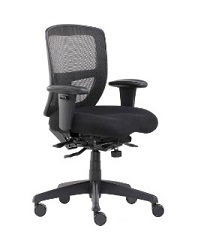The mechanics or science of ergonomics otherwise also known as human factors engineering is indeed an interesting field within the spectrum of medical science that places focus on the design of elements around us.
This focus is specifically targeted towards organizing the environment to accommodate the capabilities and limitations of human beings optimally. The historical background of ergonomics stemmed from observations of human needs which eventually resulted in various improvements that were aimed at enhancing comfort, higher efficiency, and safety, particularly in working environments to enhance productivity and keep employees from risking injuries.
The concept of ergonomics which resulted in the development of office furniture such as adjustable ergonomic chairs, desks, and accessories emerged during the Industrial Revolution in the 18th century as factories were established for mass production. During this period there was a relevant need to increase or rather optimise the average workers’ productivity levels.
The idea of ergonomics is generally associated with Frederick Winslow Taylor who is regarded as the “father of scientific management,” and was the primary figure behind the development of ‘time and motion’ studies that revolved around analyzing work processes and developing mechanisms that advocate the maximization of efficiency. Even though Taylor’s investigation focused primarily on productivity levels, it was a precursor that would later branch out toward a deeper understanding of ergonomics.
As the 20th century approached, ergonomics expanded significantly as those involved in the field of ergonomics began to consider the elements of human physical factors that influence safety and performance. During the First and Second World Wars, there was a need for specialized equipment for military operations and the focus of this specialized equipment revolved around interfaces that were not just easy to use under the stressful scenarios of combat, but also were comfortable to a degree where soldiers were able to maintain focus which led significant advancements in cockpit design and control systems.
Similarly in an office environment, employees would be able to maintain their focus on the tasks at hand when the settings around them are comfortable, especially their workspace which would include a chair that they would be subjected to sit on for hours. Regular office chairs would cause a lot of discomfort after certain hours which leads to loss of focus in contrast an ergonomic office chair would allow employees to stay focused for longer periods simply because of the fact that the employee is comfortable.
The entire science of ergonomics had undoubtedly continued to evolve as numerous advancements in technology were made over the decades and as more complex work systems emerged (the emergence of the computer as a standard working tool), in the 80s the focus shifted towards human-computer interaction which prioritized user-friendly interfaces which led to the development of usability engineering principles. Under this concept, emphasis was given to user-centered designs.
Currently, ergonomics has expanded beyond the workplace and has been applied to the various aspects of everyday life. For example, ergonomic principles are now applied in the design of furniture, vehicles, medical devices, and even virtual environments.






